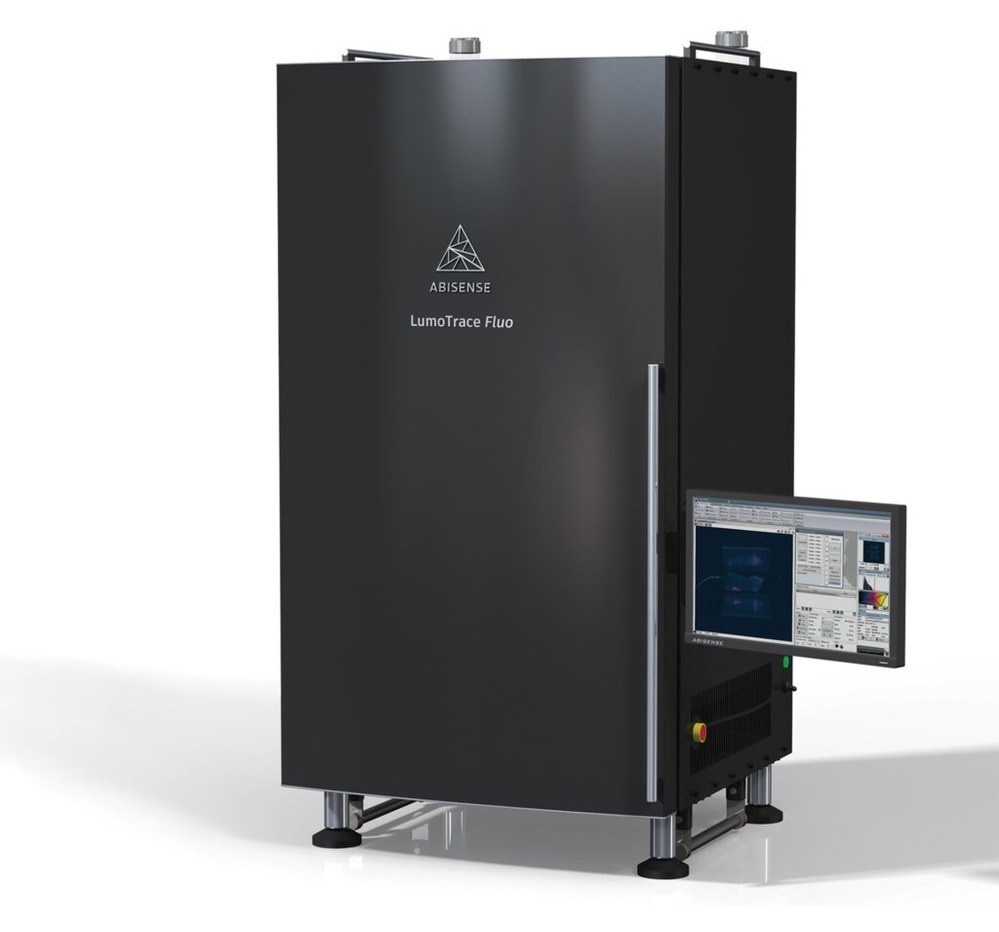Catalog
Search
472 products
View:
- Selected: 0Areas of use
- Selected: 0Item names
- Selected: 0Manufacturer
- Selected: 1Made in
- Selected: 0Additional
View:
472 products
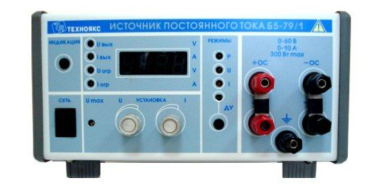
DC power supply B5-79/1
The source is capable of operating both independently and as part of automated measuring systems with interfaces such as RS-232 and ETHERNET
Technical specifications
Output voltage setting range from 0 to 60 V
Output current setting range from 0.2 to 10 A
Electrical output power, not less than 300 W
The main error of the output voltage setting is ± 100 mV
The main error of the output current setting is ± 100 mA
Additional error in setting the output voltage caused by a deviation of the mains voltage from the nominal value by ± 10% ± (0.0001 · Uust + 1 mV)
Additional error in setting the output voltage caused by a change in the load current from 0.9 of the maximum value to zero ± (0.0002 · Uust + 5 mV)
Additional error in setting the output current caused by a deviation of the mains voltage from the nominal value by ± 10% ± (0.0002 · Iust + 2 mA)
Additional error in setting the output current caused by a change in the load voltage from 0.9 of the maximum value to zero ± (0.0005 · Iust + 5 mA)
Instability of the output voltage for any 10 minutes during 8 hours of continuous operation, no more than ± 50 mV
Instability of the output current for any 10 minutes during 8 hours of continuous operation, no more than ± 50 mA
Operating temperature range from 10 to 50 °C
AC power supply 220 V, 50 Hz
Power consumption, no more than 500 VA
Overall dimensions, mm 240x128x313
Weight, not more than 6.0 kg
TEKHNOYAKS
Moscow
Produced in: Moscow
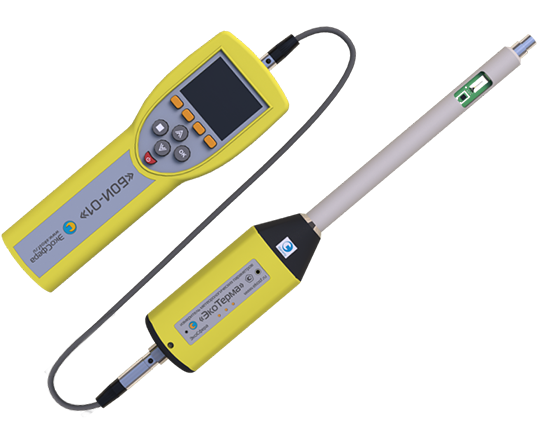
Thermoanemometer-hygrometer-barometer EcoTerma Maxima 01
from
52 900 ₽
Eco-E
Москва
Produced in: Moscow
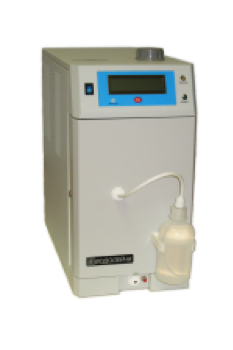
Device "Aquarius-M"
from
210 000 ₽
It is intended for obtaining analytical purity in laboratory conditions from distilled water, used for HPLC, electrophoresis, preparation of solutions, chromatographic samples, refueling of electrolysis generators of hydrogen/oxygen and other purposes.
Technical specifications
The specific resistance of the received water is not less than 17.5 MOmhsm
Productivity is not less than 1 l/hour
Metal ion content is not more than:
Fe, Pb, Ni, Co 5 mcG/l
Zn 0,5 mcG/l
Cd, Cu, Mn 0,1 mcG/l
The content of ammonium ions is not more than 100 mcG/l
The number of bacteria is not more than 5 CFU/ml
Operating time of replaceable cartridges (total volume of purified water) is not less than 300 liters
Volume of refilled distilled water is 1 l
Overall dimensions are 210x590x455 mm
The mass of the filled device is not more than 15 kg
Working conditions: ambient temperature from +15 to +35 °C
Power supply from single-phase AC 220 V, 50 Hz
Power consumption is not more than 50 VA
NPP Himelektronika
Moscow
Produced in: Moscow
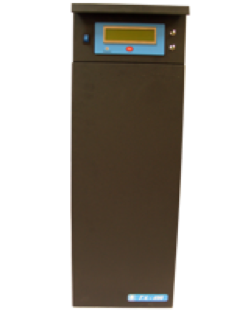
Pure nitrogen generator GCHA-120
from
382 800 ₽
GCHA-120 nitrogen generators are designed to produce in laboratory conditions nitrogen of the highest purity that is used to power analytical instruments, boxes with an inert atmosphere.
Technical specifications
The grade of nitrogen produced according to GOST 9293-74 is high purity, grade I
Volume fraction of nitrogen is not less than % by volume (including impurities of inert gases — argon, neon, helium) 99.999
Volume fraction of oxygen is not more than, % vol. 0.0005 (5 ppm)
Volume fraction of water vapor is not more than, % vol. 0.0007 (7 ppm)
Volume fraction of hydrogen is not more than, % vol. (ppm) 0.0002 (2 ppm)
The volume fraction of the sum of carbon-containing compounds in terms of methane is not more than, % vol. (ppm)*
(with a methane content in the supply air of not more than 4 ppm) 0.0003 (3 ppm)
Maximum nitrogen capacity is at least 120 (2.0 l/min), l/h
Nominal nitrogen output pressure (with the throttle open) is 4 ati
The time of setting the operating mode for single-shift operation is no more than 45 min
Nominal inlet air pressure is 6 ati
Maximum allowable inlet air pressure is 8 ati
Minimum inlet air pressure is 5.5 ati
Compressed air consumption, at nominal inlet pressure and maximum flow rate is no more than, l/h, 3600 (60 l/min)
Power consumption is not more than, VA, 100
Overall dimensions, (width x depth x height) are not more than, mm, 230x580x680;
Weight is not more than, kg 32
Working conditions:
ambient temperature, C°, from +10 to +35
Electric power supply from
single-phase AC mains voltage, V, 220± 10%
and frequency, Hz, 50 ± 1
Average full service life is at least 6 years
The generator for electrical safety meets the requirements of Class 1, type H according to GOST 12.2.025-76
NPP Himelektronika
Moscow
Produced in: Moscow
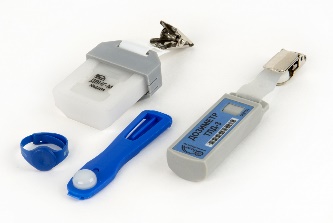
Individual thermoluminescent dosimeters
The principle of operation of dosimeters is based on the accumulation of ionizing radiation energy by detectors proportional to the radiation dose. In DVG-02TM installations, DOZA-TLD complexes, etc., when the detector is heated, the accumulated energy is released in the form of light radiation, which is recorded by an electronic device.
Doza
Zelenograd
Produced in: Moscow

rhIL-15
from
19 000 ₽
IL-15 is a pleiotropic cytokine. It is essential for the development, survival, and activation of NK cells. Participates in the induction of cytotoxic effector cells. Acting as an interleukin-2 antagonist, IL-15 contributes to the maintenance of CD8+ T memory cells and the maintenance and survival of CD4+ and CD8+ T lymphocytes. Acts on a number of other cells.
SajStorLab
Moscow
Produced in: Moscow
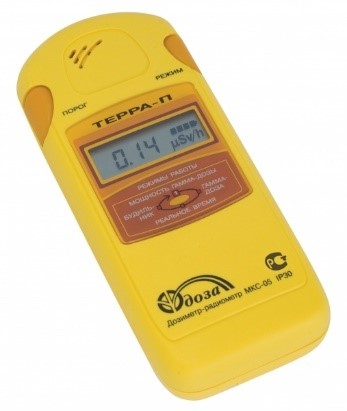
Dosimeter-radiometer household ISS-05 "Terra-P"
Purpose
measurement of the ambient dose equivalent of N*(10) gamma radiation;
measurement of ambient dose equivalent of H*(10) gamma radiation;
assessment of surface contamination with radionuclides.
Doza
Zelenograd
Produced in: Moscow
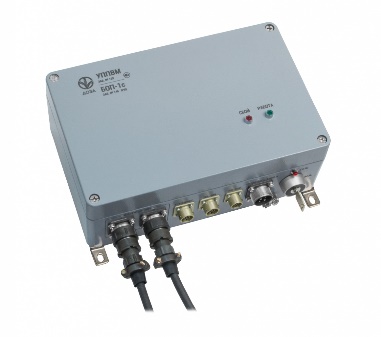
BOP-1c information processing and transmission units
Purpose:
processing of information received from detection units (primary converters);
data transmission to the information network;
data transfer to a portable computer (remote control tuning PN-PC);
storage of threshold settings and parameters of detection units (primary converters);
power supply and diagnostics of detection units (primary converters);
output of threshold exceeding signals to built-in sound and LED alarms and to remote alarm units (BAS/BAS-1c);
output of discrete signals (dry contacts);
archiving of data in non-volatile memory.
Doza
Zelenograd
Produced in: Moscow
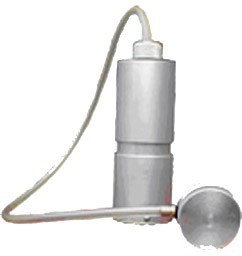
IPA-01 Wearable Sampler
from
20 000 ₽
Determination of the integral concentration of radioactive aerosols in the personnel breathing area (exposure time 8 hours) by radon (thoron) daughter products and long-lived radionuclides in accordance with the requirements of NRB-99 and OSPORB-99. Automatic stabilization of the air sampling rate. (It is possible to supply additional consumables to IPA - 01)
NMT-ZASHCHITA
Moscow
Produced in: Moscow
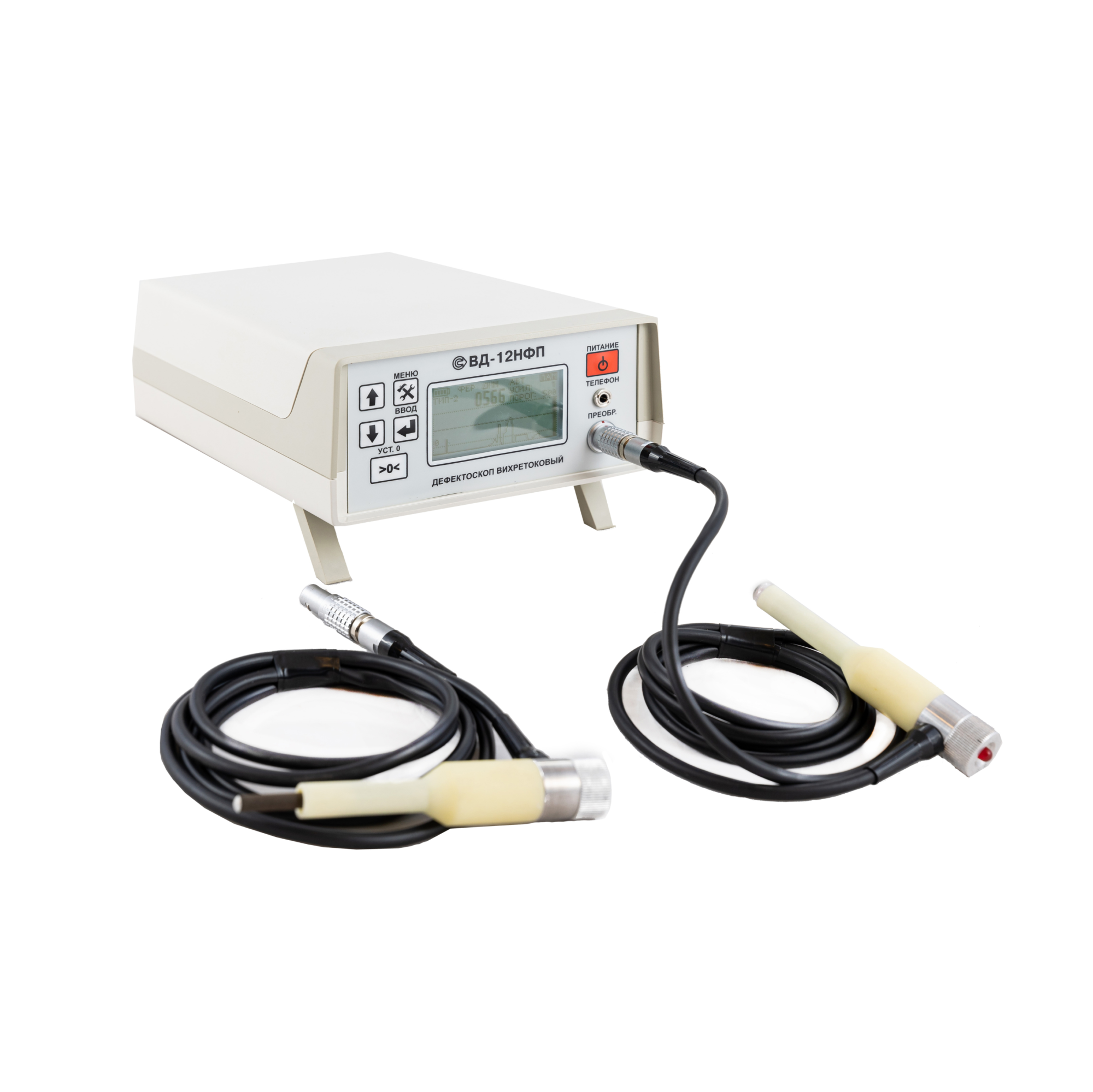
VD-12NFP Eddy Current Flaw Detector with 2 converters
from
292 500 ₽
The device allows you to detect surface defects like cracks, visualizing the signal from the continuity interruptions on the display. The design of the flaw detector allows to determine with high reliability the exact location and depth of defects even on rough surfaces of flat and curved shape, including under a layer of corrosion or in the presence of a protective coating of the controlled area of the product with a thickness of up to 3 mm.
The principle of operation of the VD-12NFP eddy current flaw detector:
The principle of operation of the VD-12NFP eddy current flaw detector is based on the phenomenon of electromagnetic induction. An alternating magnetic field created in the primary coil of the converter by means of a sinusoidal voltage generator excites eddy currents in the controlled product. A parasitic magnetic field formed by eddy currents at the locations of defects affects the measuring unit (two signal coils connected in series) of the converter, creating an electromotive force in it. The amplitude and phase of the secondary signal carries information about the properties of the defect and the position of the transducer relative to the surface of the controlled product. The output signal from the measuring unit of the converter, after amplification and processing using a microprocessor, is displayed on the readout of the device, and is also stored in the memory block for subsequent transmission to a personal computer. In addition, information about the defects is displayed on a piezoelectric bell used as an audio indicator.
Design, features and advantages of the VD-12NFP eddy current control device:
The VD-12NFP eddy current flaw detector is a portable device capable of working both in a desktop and in a suspended position in a special bag-case. This ensures convenient operation of the device in a variety of conditions: in the laboratory, in the factory shop or during field tests. The flaw detector consists of an electronic unit with controls and display of test results, as well as three replaceable converters with wear-resistant corundum tips connected to the electronic unit using a connector. The choice of the desired converter depends on the magnetic properties of the material. For the control of parts with grooves, a converter with an inclined tip is offered. The device is powered by 4 AA batteries located in the battery compartment of the electronic unit.
The advantages of the flaw detector include:
- a screen for visualizing the signal during measurement;
- light weight and compact dimensions that allow you to use the device in almost any conditions;
- the ability to control the quality of products of various curvature and surface roughness even in the presence of a protective coating or a layer of corrosion;
- wear resistance of converters, which is important when monitoring products with increased surface roughness (up to Rz£320);
- automatic detection of the type of converter when connected, as well as the presence of built-in memory for storing control results;
- the possibility to transfer data to a personal computer for storing or printing control protocols.
Scope of application:
Portability, high productivity, the ability to work with curved and rough surfaces, as well as the fact that the operation of the flaw detector is practically unaffected by humidity, pressure and contamination of the gas environment or the surface of the controlled product with non-conductive substances ensure the versatility of the device for detecting cracks in various materials.
The eddy current flaw detector VD-12NFP is actively used in heavy industry for diagnostics of metal structures, assemblies and mechanisms for various purposes in factory workshops or laboratories, including at enterprises of railway transport, automotive industry, mechanical engineering, pipelines and metal structures.
The VD-12NFP flaw detector can be used with equal success in the field, factory workshops, depots, laboratories and workshops to monitor the current condition, as well as to assess the degree of wear, the possibility and duration of further operation of such products made of metals and alloys as over-spring beams, wagon wheels, auto coupler housings, side frames, wheel couples and others.
Distinctive features:
• control of parts with surface roughness up to Rz320 due to wear-resistant corundum tips;
• assessment of the degree of danger (depth) of the defect;
• automatic detection of the converter type;
• microprocessor control;
• 5 universal programs for saving settings;
• capable of detecting defects with a depth of 0.3 mm
• The angle of deviation of the converter from the normal to the working surface up to 60°
• Operating frequency of 70 kHz;
• Maximum working clearance of 3mm;
• visualization of the signal from the defect;
• built-in memory for storing control results
• Equipped with a Bluetooth 2.0 wireless communication module, which allows you to transmit control results and control the flaw detector at a distance of up to 20m;
• The possibility of forming a control protocol based on the data transmitted to the PC;
• Temperature range from 0°C to +40°C;
• The design allows you to work with the flaw detector without removing it from the bag-case.
Basic kit:
Ia5.173.016: 1 electronic unit
Ia5.125.031: 1 converter, type 1; marked as (•)
Ia5.125.030: 1 converter, type 2; marked as (••)
Ia2.706.002: the KOIDZ-VD set of samples with a passport (consisting of:
Ia8.896.034: 1 piece;
Ia8.896.035: 1 piece;
Ia8.896.035-01: 1 piece) - A certificate of verification.
4 AA batteries
1 charger
1 small-sized phone
1 CD with software
1 special key
1 bag-case
A calibration certificate is issued for the VD-12NFP flaw detector.
1 passport
1 operating manual
1 calibration instruction
RII MNPO SPEKTR
Moscow
Produced in: Moscow
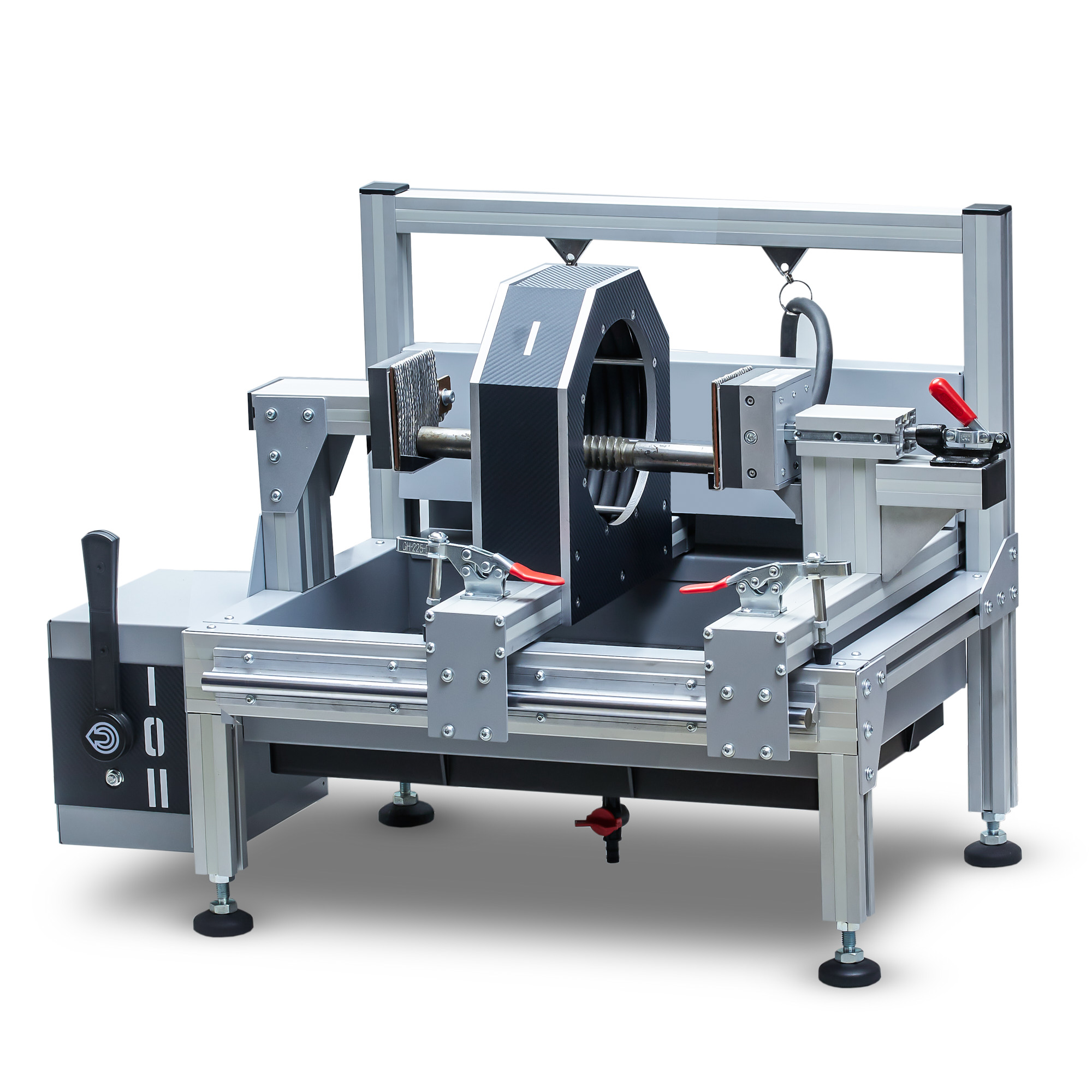
Magnetic powder control stand
The magnetic particle testing stand has a simple switch between circular and longitudinal magnetization modes, as well as easy movement and fixation of the solenoid and electrical contact for locating the test object in the working area of the stand.
Clamping of the controlled part during circular magnetization occurs in one movement.
The stand can be installed on a stationary or mobile magnetic particle testing station. For ease of inspection after magnetization, a tray with a removable protective grid is provided. The protective rear wall protects against the spread of spray splashes outside the working area.
RII MNPO SPEKTR
Moscow
Produced in: Moscow
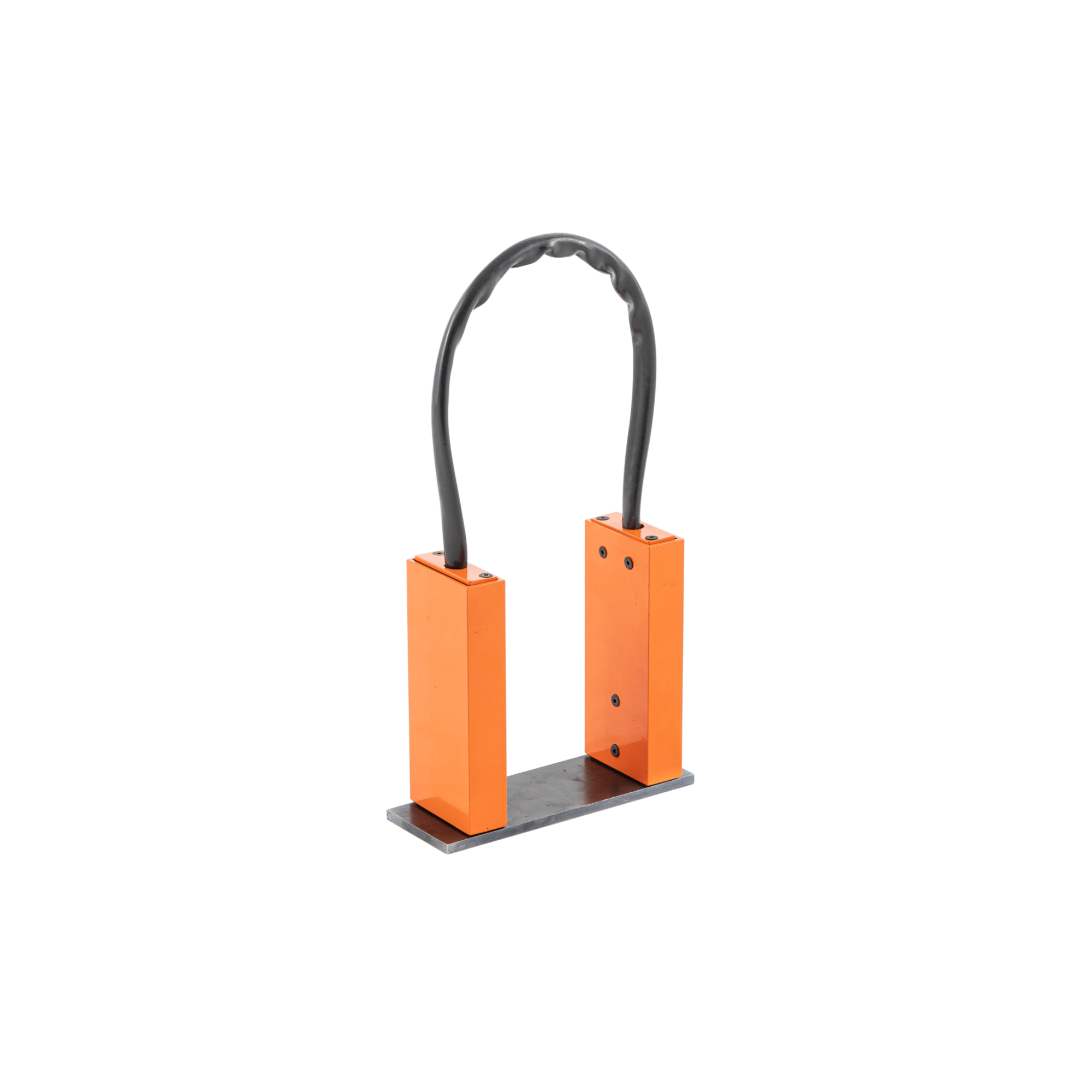
UN-5 Magnetizing device
from
95 550 ₽
The principle of operation of the magnetization device:
The device consists of two compact blocks made of non-magnetic material connected by a flexible magnetic circuit. In each block there is a permanent magnet made of neodymium-iron-boron alloy (Ne-Fe-B). When installing the blocks on the surface of the part, a closed magnetic circuit is formed with the direction of the magnetizing field from one pole to the other. Above the defect scattering fields, magnetic powder particles are deposited to form an indicator pattern.
Design features and advantages of the device for magnetic particle control UN-5
The delivery package with the device includes a portable case, an inter-pole jumper installed during transportation, and a liner for fixing blocks with permanent magnets.
The UN-5 portable device does not require electrical power and therefore can be used where the supply of stationary power is difficult or impossible under regulatory documents: in the field, when working at height, for inspection of capacitive equipment operating under pressure, etc.
- The device is easy to use, lightweight and small-sized, working with it does not require special physical and technical training from the operator;
- Flexible magnetic core allows you to use the device to control parts of complex shape;
- The UN-5 magnetizing device is distinguished by an increased quality of the indicator pattern and an increased control zone due to a reduced uncontrolled zone near the poles and an improved ratio of the normal and tangential components of the magnetic field (Russian patent No. 60732);
- The technical characteristics of the device comply with Russian and foreign regulatory documents, this being the reason of its widespread use in more than 40 countries, including Germany, France, Brazil and Norway.
When monitoring, the controlled area is the central part of the area located between the magnetic poles of the device.
The width of the monitored area is determined by the width of the magnetic poles of the device and is approximately 60 mm. The length of the monitored section depends on the inter-pole distance.
the dimensions of the controlled area are given depending on the device's inter-pole distance:
Inter-pole distance, mm 95: 75 55
Controlled area between the working poles, mm: 60x60 40x60 25x55
The length of the defect detection zone depends on the distance established between the working poles of the magnet on the controlled product.
Defects are not detected in the areas adjacent to the poles of the magnet. The length of these sections is 18 mm with an interpolar distance of 95 and 75 mm. With an interpolar distance of 55 mm these sections are 13 mm long.
Scope of application:
Magnetizing devices for magnetic powder flaw detection are used in many industries, including railway, water and aviation transport, in the construction and operation of pipelines, in chemical and petrochemical production.
The flexible link between the magnetic blocks allows the control of products of complex shape, for example, cylindrical tanks, high-pressure apparatuses, main pipelines, etc.
When checking for defects, the device can be used together with other auxiliary equipment for:
- preliminary and subsequent demagnetization;
- application of a magnetic indicator (which can be dry or in the form of an emulsion);
- magnetoluminescent control (with ultraviolet lamps).
RII MNPO SPEKTR
Moscow
Produced in: Moscow
